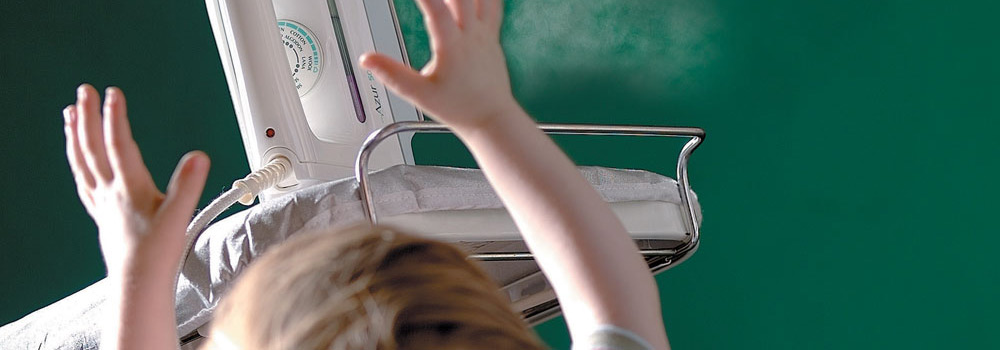Window blind cords and chains can pose a risk for babies and children who could injure or even strangle themselves on the hanging looped cords.
PREVENTION:
-
Install blinds that do not have a cord, particularly in a child’s bedroom.
-
Pull cords on curtains and blinds should be kept short and kept out of reach.
-
Tie up the cords or use one of the many cleats, cord tidies, clips or ties that are available.
-
Do not place a child’s cot, bed, playpen or highchair near a window.
-
Do not hang toys or objects on the cot or bed that could be a hazard.
-
Do not hang drawstring bags where a small child could get their head through the loop of the drawstring.
WHAT TO DO:
Untangle your child, call 999 and start CPR.
A burn is damage to the skin, which is caused by direct contact with something hot. Burns can also be caused by certain chemicals, electricity and friction. A scald is a burn that is caused by a hot liquid or steam. Scalds are treated in the same way as burns.
PREVENTION:
-
Keep hot drinks out of reach.
-
When running a bath, turn the cold water on first and always test the temperature with your elbow before letting your child get into the bath or shower.
-
Keep hot irons, curling tongs and hair straighteners out of reach, even when cooling down.
-
Turn pan handles away from the front of the counter.
WHAT TO DO:
-
Treat the burn or scald straight after the accident by running under cold water for 20 minutes.
-
Do not use creams, lotions or ointments on the burn
or scald.
-
Always take your child or baby to A&E if it is
anything other than a very mild burn.
Glass causes serious cuts with many children ending up in A&E.
PREVENTION:
Do not leave drinking glasses on the floor. Make sure glass bottles are kept up high.
WHAT TO DO:
-
If the cut is not serious, bathe the area, make sure there is no glass left and cover with a clean non-fluffy cloth.
-
If the cut is serious, is bleeding a lot or has a piece of glass under the skin, go to A&E.
Many children drown, often in very shallow water. It happens in the bath, in garden ponds, paddling pools and water butts (barrels).
PREVENTION:
WHAT TO DO:
Get your child out of the water. Try to get them to cough up any water. If they are not responding, call 999.
Babies and toddlers can easily swallow, inhale or choke on small items like marbles, beads, lolly sticks, balloons, peanuts, buttons, nappy sacks, plastic toy pieces, strings or cords.
PREVENTION:
-
Check on the floor and under furniture for small items and that toys with small pieces are not left out for a toddler to chew and choke on.
-
Check toys are age appropriate, in good condition and include toy safety marks.
WHAT TO DO:
If your child is choking, act immediately and calmly. Make sure you do not push the object further down the throat.
Encourage your child to cough. Use back blows, if they become unconscious, call 999 (do not leave your child alone) and start CPR.

